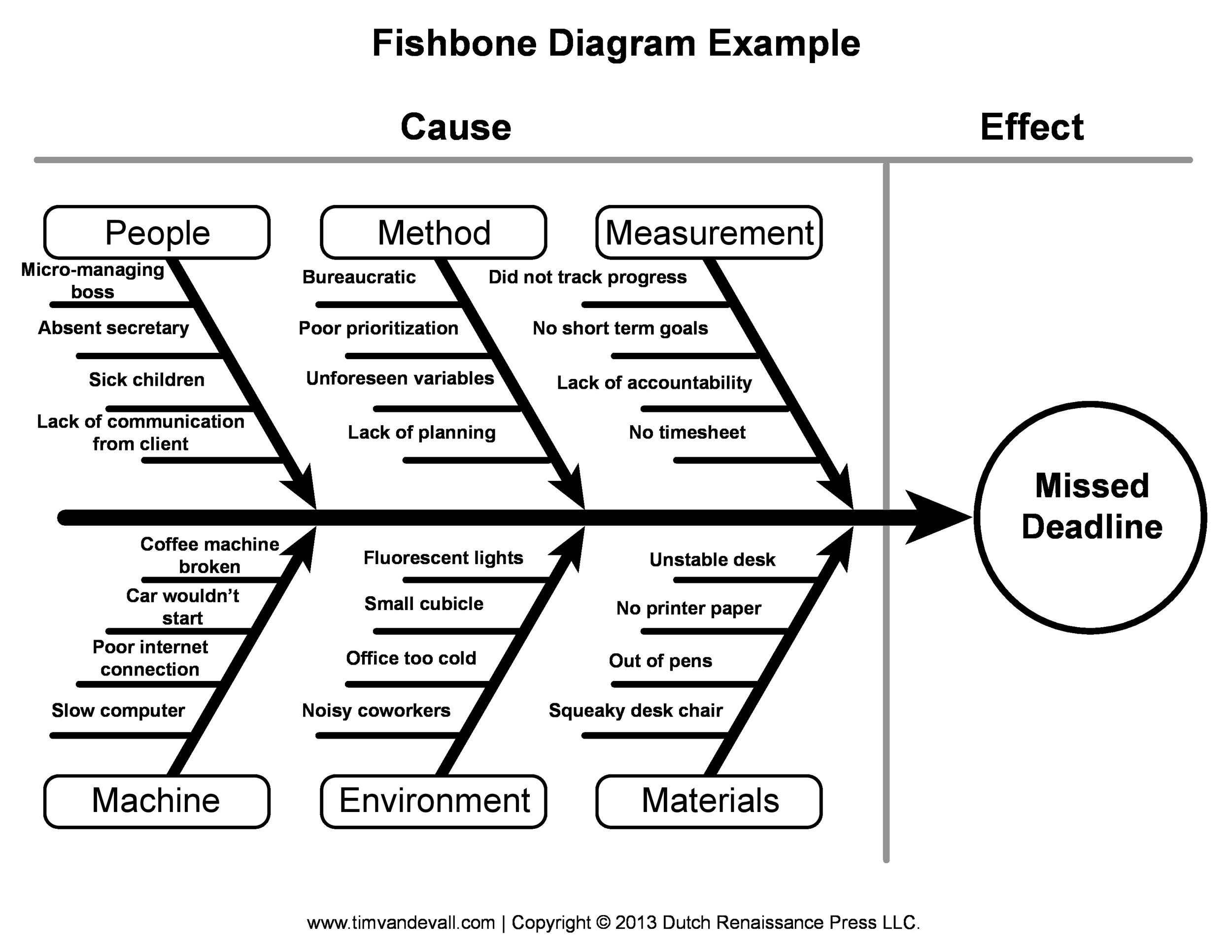

Major categories can be defined by the help of brainstorming sessions. Define the major categories of causes for the Problem Once all the project team agreed on the problem, the problem expression can be written in a box at the mouth of the fish.Ģ.
Fishbone diagram cause and effect how to#
How to Create a Fishbone Diagram (Cause and Effect Diagram or Ishikawa Diagram)?īelow steps can be followed to create a fishbone diagram for problem solving. Many classifications can be made for categorization of causes in a fishbone diagram however, the above are more popular than the others. In the Marketing industry, you can categorize the factors (causes) by 7Ps: In the Manufacturing industry, you can categorize the factors (causes) by 6Ms: In the service industry, you can categorize the factors (causes) by 4Ps:

They may be helpful to create the framework. Below are a few suggested categories for some industries. Causes of problems may arise from typical categories based on the industry. Fishbone Diagram (Cause and Effect Diagram or Ishikawa Diagram)įishbone (cause and effect diagram or Ishikawa diagram ) diagrams are commonly used in many industries such as service, manufacturing, marketing, and construction.The seven basic quality tools are graphing techniques that people commonly use for quality control management purposes. The Fishbone Diagram (Cause and Effect Diagram or Ishikawa Diagram) is one of the seven basic tools of quality. It helps to understand what causes a problem and what are the possible ways to solve it. Each defect or cause is a source of variation. It is a visual quality management tool that provides an overall list of possible causes to determine the root cause of a specific event. This diagram looks like a fish skeleton so that it took its name from its appearance. The concept of the Fishbone Diagram was developed by a Japanese Professor, Dr. In this article, we will review the Fishbone diagram (cause and effect diagram or Ishikawa diagram ) as a problem solving tool and discuss the advantages and limitations of it. Basically, it analyzes various possible causes of a problem with the help of brainstorming sessions. Fishbone Diagram (Cause and Effect Diagram)įishbone diagram, also known as cause and effect diagram or Ishikawa diagram is a quality management tool that is commonly used to identify the root cause of a problem.


 0 kommentar(er)
0 kommentar(er)
